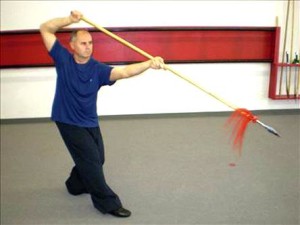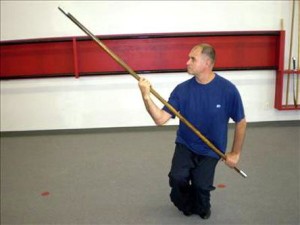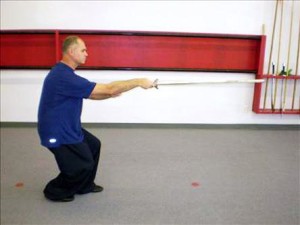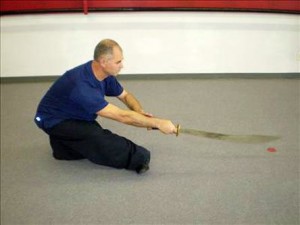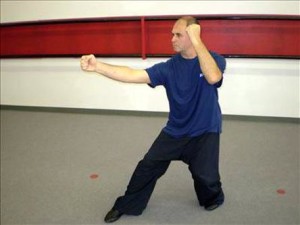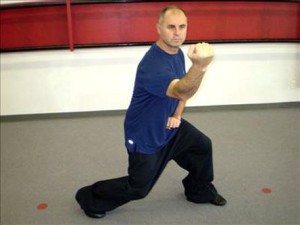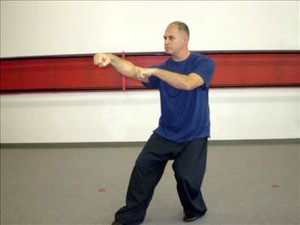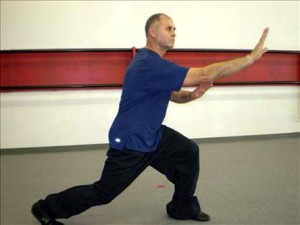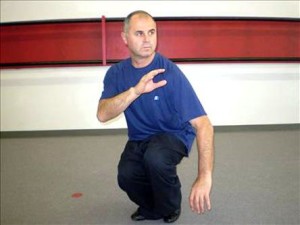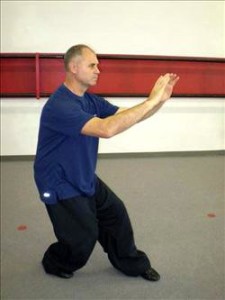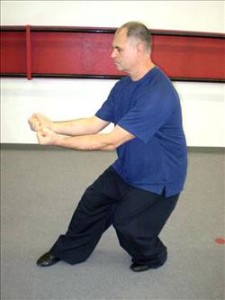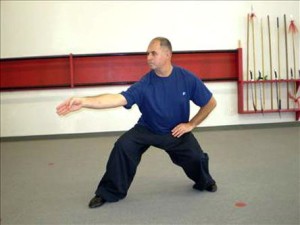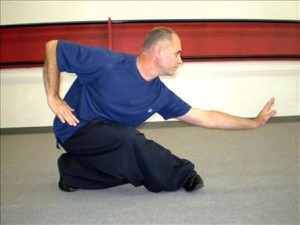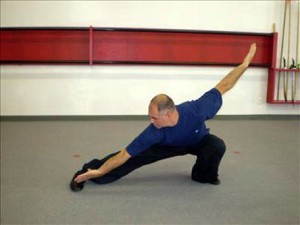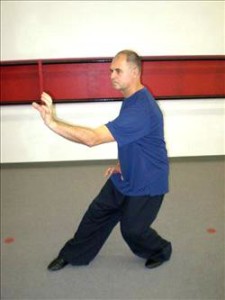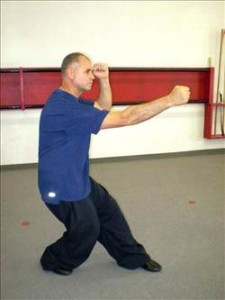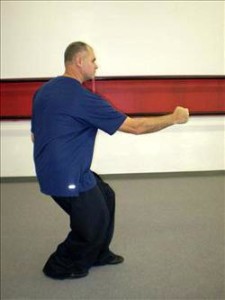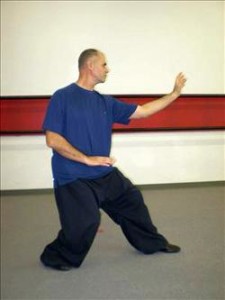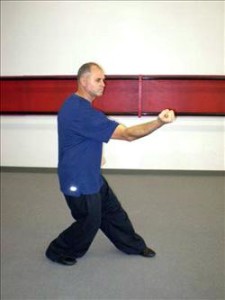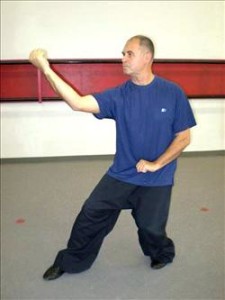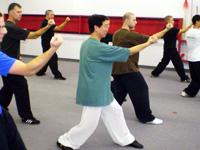
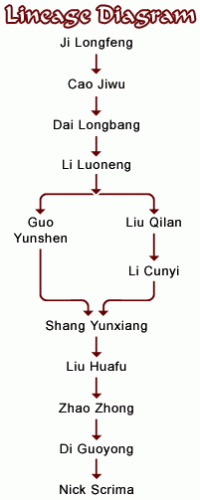 Xingyiquan (Pinyin spelling) and Hsing I Chuan (Wade-Giles spelling)
Xingyiquan (Pinyin spelling) and Hsing I Chuan (Wade-Giles spelling)
Xing means form and Yi means intent. The name itself makes it clear that this is a martial art style that integrates action and will.
Traditional history often credits the origins of Xing Yi Quan to General Yue Fei, who lived during the Song Dynasty (1103-1141). However, there is no actual documented history to support this claim.
The most reliable historical information references Ji Longfeng (also known as Ji Jike) as the originator of the style. Ji Longfeng lived during the end of the Ming Dynasty and the beginning of the Qing Dynasty. He was a peerless fighter with the spear and was known as Shen Qiang (“Divine Spear”). Reportedly, Ji created Xing Yi Quan based on the use of spear techniques. Xing Yi is a sophisticated art, and most likely many masters contributed to its development.
Ji Longfeng taught many students, and in time the style split into three branches: the Hebei, Shanxi, and Henan schools.
The three styles have common as well as varying elements. Because I teach Hebei Xing Yi at my school, the focus here will be on its distinctive features and characteristics.
San Ti Shi (“Trinity Posture” or “Three Body Posture”) is fundamental practice and is essential for building a sound foundation in the art. Standing practice is combined with breathing to develop a root and refine and build the Qi (the body’s internal or vital energy).
From San Ti, training progresses to Wu Xing Quan (“Five Elements Fists”). These five basic fists are: Pi Quan (“Splitting Fist”), Zuan Quan (“Drilling Fist”), Beng Quan (“Smashing Fist”), Pao Quan (“Cannon Fist”) and Heng Quan (“Crossing Fist”). Wu Xing Quan are often referred to as Mu Quan or Mother Fists and constitute the framework of Xing Yi. These fists are governed by the Daoist theory of Wu Xing, or Five Elements (Metal, Water, Wood, Fire, and Earth). Mastery of the five fists and full understanding of the five elements theory is the key to gaining skill in the art, and they remain an important part of practice even at advanced stages.
Once a certain level of proficiency with the Five Elements Fists is acquired, the first fist form, Wu Xing Lien Huan Quan (“Five Elements Linked Fists”) is learned. Usually some basic partner drills are also introduced, such as San Shou Pao (“Three Hand Cannon”) and Jiao Shou Pao (“Entangling Hands”), to start building a sense of Xing Yi’s fighting applications and theories. At this stage, Wu Xing Pao (“Five Elements Fists Partner Routine”) is practiced to render a better understanding of attacking and defensive applications of Xing Yi.
Hebei Xing Yi incorporates the practice of the Shi Er Xing (12 Animals Forms) to further advance and expand fighting techniques and strategy. The 12 Animals are: Dragon, Tiger, Monkey, Horse, Water Lizard, Chicken, Sparrow Hawk, Wedge-Tailed Hawk, Snake, Swallow, Eagle, and Bear.
Originally Xing Yi had only a few routines. Over time, many masters contributed to its growth, and today the style contains many empty-hand, weapons, and partner routines that are learned as a student progresses through the training.
Xing Yi’s nature is concise, dynamic, and economical. On the surface, movements seem predominantly linear, and this gives the appearance that Xing Yi is simple and direct, but this is not the case. The techniques are based on highly evolved concepts and contain many underlying intricacies. Xing Yi is easy to learn but requires diligence and dedication to master. Along with Taiji and Bagua, it is often referred to as an internal style of martial arts, but because of its brisk and powerful actions it does not appear as such at first glance.
There is nothing flashy about the style; it is fast and extremely effective close-in. Kicking is generally aimed at low targets and is used in conjunction with the hand work. Nei Gong (“Internal Training”) is an important and integral aspect of the art, making Xing Yi an excellent style to learn for both self defense and nourishing one’s health.
Xing Yi is an aggressive style. Fighting strategy dictates overwhelming the opponent’s defense with powerful and pressing attacks and instantaneously turns defense into offense. A Xing Yi fighter gives ground reluctantly and only for an instant before pressing the attack again. Shattering and jarring blows are generated by lining up the front foot, the nose, and the strike in coordination with stepping, thus transferring forward momentum and bodyweight into the opponent’s center.
Fa Jin, the release of explosive force in Xing Yi, is akin to a piece of rattan when it is bent. Rattan is pliable, resilient, and yet sturdy; it flexes but snaps back with great force. Like rattan, Xing Yi looks rigid on the surface but in actuality is pliable, lively, and energetic. Practitioners seek to coordinate the motion of their entire body, along with their mind’s intent, into one focused action. Xing Yi has a Yang exterior and a Yin interior and blends the actions of hard and soft.
My first exposure to Xing Yi, although brief, was with Master B. P. Chan, who introduced me to the fundamentals of the system. I also studied Xing Yi sword and two-man sword from Master Tao Ping-Shiang and continued to learn various aspects of the art from different teachers.
I now train with Master Di Guoyong of Beijing and bring him from China twice a year for extended stays. Master Di has given life to my Xing Yi practice. His knowledge and skill are first-rate, and I feel privileged to be able to study with him.
